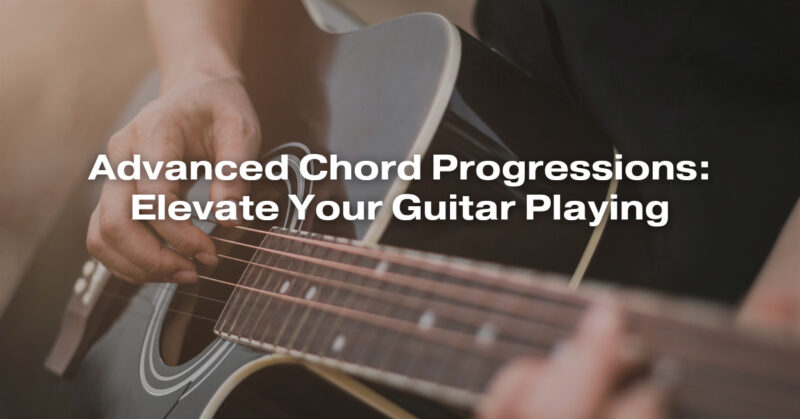Advanced chord progressions can elevate your guitar playing to new heights by adding depth, complexity, and sophistication to your music. Whether you’re a songwriter, composer, or guitarist looking to expand your harmonic palette, here’s a guide to help you explore and master advanced chord progressions:
**1. Learn Music Theory:
- Gain a solid understanding of music theory, particularly harmony and chord construction. Familiarize yourself with chord types, chord extensions (7th, 9th, 11th, 13th), and their relationships within different scales and modes.
**2. Diatonic Harmony:
- Explore diatonic harmony within major and minor scales. Understand how chords are built using scale degrees, and practice playing chords that naturally occur in a given key.
**3. Modal Chord Progressions:
- Experiment with modal chord progressions, such as those based on the modes of the major scale (Ionian, Dorian, Phrygian, Lydian, Mixolydian, Aeolian, Locrian). Each mode offers a distinct harmonic flavor.
**4. Secondary Dominants:
- Incorporate secondary dominant chords (V/V, V/ii, V/iii, etc.) to create tension and lead to resolving chords. These chords temporarily shift the key, adding interest to your progressions.
**5. Chromatic Chords:
- Integrate chromatic chords and passing chords to add unexpected twists to your progressions. Chromatic chords connect two diatonic chords with a half-step movement.
**6. Voice Leading:
- Focus on smooth voice leading, where individual chord tones move to the closest note in the next chord. This creates a seamless and melodically pleasing flow within your progressions.
**7. Extended Chords:
- Incorporate extended chords, such as major 7ths, minor 9ths, and 13ths, to create lush and harmonically rich sounds. Experiment with various voicings and inversions.
**8. Altered Chords:
- Experiment with altered chords, which include augmented, diminished, and other modifications of basic chords. These chords can introduce tension and dissonance for expressive effect.
**9. Modulations:
- Explore key modulations (changing to a different key) within your progressions. Modulations can create a sense of movement and excitement.
**10. Borrowed Chords: – Use borrowed chords (chords from a parallel key) to introduce unexpected harmonic elements into your progressions.
**11. Sus Chords: – Experiment with suspended chords (sus2 and sus4) to create a sense of suspension and release within your chord progressions.
**12. Harmonic Rhythm: – Vary the harmonic rhythm by changing chords at different points within a measure. Syncopated and irregular harmonic rhythms can add rhythmic interest.
**13. Rhythmic Patterns: – Combine advanced chords with intricate rhythmic patterns. Syncopation, polyrhythms, and unusual time signatures can create unique progressions.
**14. Contrast and Variation: – Add contrast and variation within your progressions by incorporating sections with different harmonic colors and dynamics.
**15. Use Chord Substitutions: – Experiment with chord substitutions, such as tritone substitutions or modal interchange, to create harmonic surprises and unique textures.
**16. Transcribe and Analyze: – Transcribe chord progressions from songs in various genres and analyze how advanced harmonies are used. This can provide valuable insights into their application.
**17. Play in Different Positions: – Move chord shapes up and down the fretboard to explore different positions and voicings. This can open up new sonic possibilities.
**18. Record and Experiment: – Record your progressions and experiment with different chord voicings, inversions, and arrangements. Listen critically and refine your ideas.
**19. Collaborate and Seek Feedback: – Collaborate with other musicians to incorporate advanced harmonies into your music. Seek feedback from experienced musicians or instructors for constructive guidance.
**20. Compose Original Music: – Use your knowledge of advanced chord progressions to compose original music. Create compositions that showcase your unique harmonic style and musical voice.
Mastering advanced chord progressions requires ongoing practice and exploration. As you delve into these techniques, you’ll unlock a wealth of creative possibilities, enabling you to craft more sophisticated and captivating music on the guitar.


